San Huang San: Herbal Ice for Inflammation and Trauma
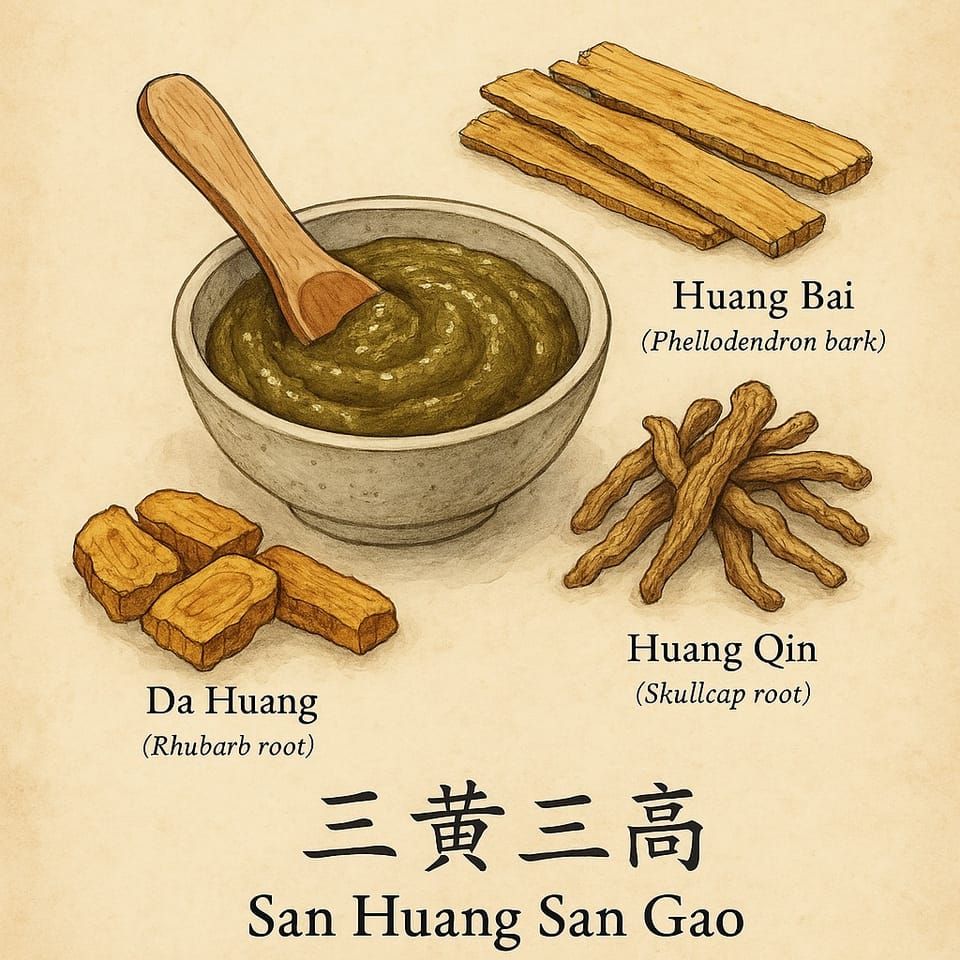
In Traditional Chinese Medicine, the art of trauma care is not only about moving blood—it’s also about taming fire. When injuries swell, burn, or radiate heat, a powerful cooling and detoxifying formula steps in: San Huang San (三黄片), commonly referred to as “Herbal Ice.”
Unlike Western ice packs that constrict blood flow, San Huang San draws out heat and toxins while preserving circulation, accelerating the natural resolution of inflammation. Whether used for fresh sprains, joint inflammation, or abscesses, this poultice embodies a sophisticated approach to acute care that modern research continues to validate.
What is San Huang San?
Literally translated as “Three Yellow Powder,” San Huang San refers to a powdered formula containing three bitter, cold herbs—each with yellow pigments and potent heat-clearing properties.
Although formulas vary slightly by lineage, the core herbs often include:
- Da Huang (Rhei Radix et Rhizoma)
- Huang Bai (Phellodendri Cortex)
- Huang Qin (Scutellariae Radix)
Other variations may add Hong Hua (Carthami Flos / Safflower), Zhi Zi (Gardenia Fructus / Gardenia Fruit) or Pu Gong Ying (Taraxaci Herba / Dandelion) to enhance the cooling and blood moving effects.
The TCM Logic: Cooling Without Constriction
In TCM, swelling, redness, and pain are signs of heat and stagnation. San Huang San clears heat, drains fire, and relieves toxicity while gently promoting circulation to prevent blood from congealing. Unlike external ice, which can trap Dampness and Cold in the tissues, this herbal poultice maintains a therapeutic balance.
It’s most often used topically as a powder mixed with alcohol, water, or egg whites into a paste and applied directly to the injury.
The Core Herbs of San Huang San
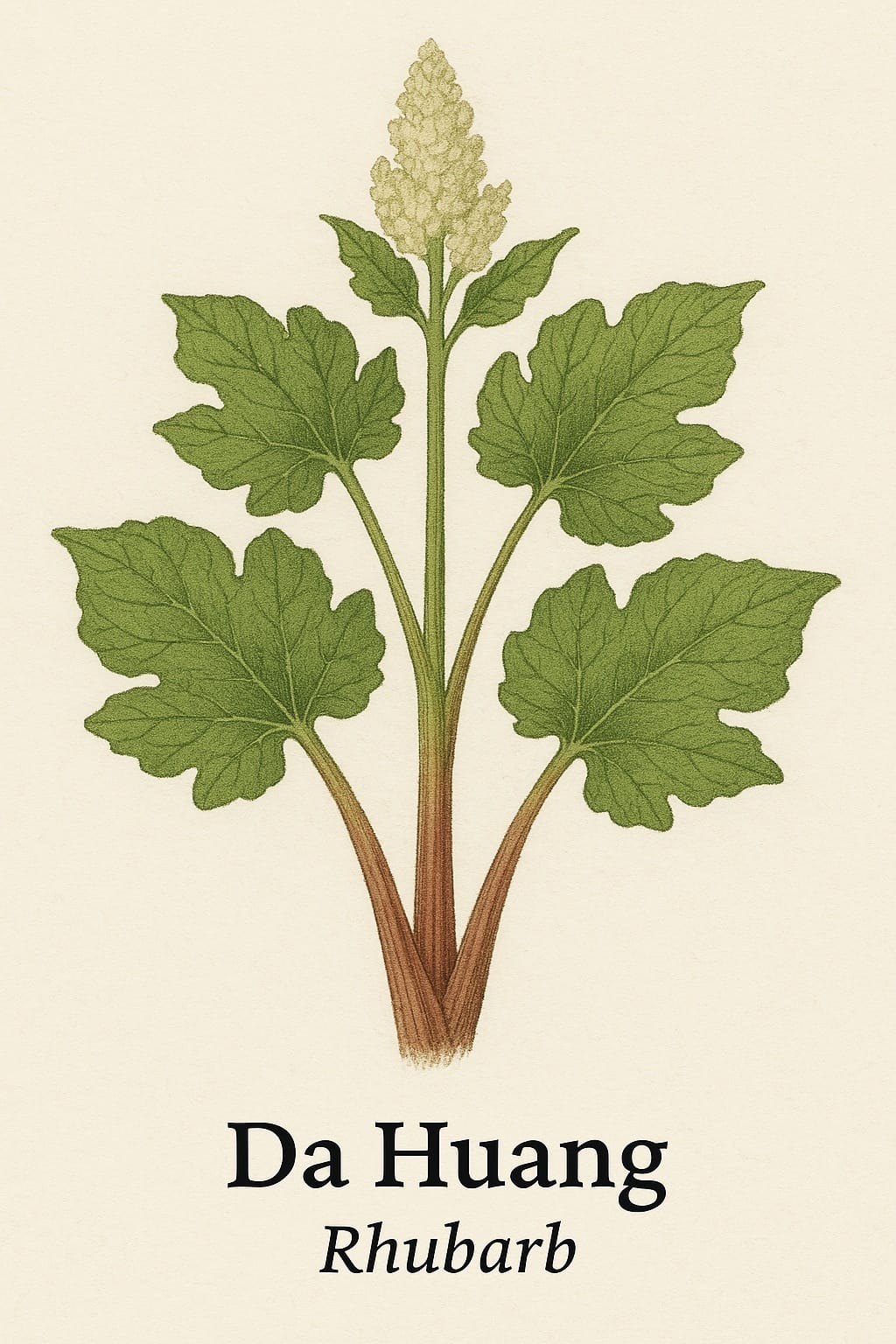
1. Da Huang (大黄, Rhubarb Root / Rhei Radix et Rhizoma)
TCM Functions:
- Purges heat and stagnation
- Moves blood and clears toxicity
- Breaks up clots and disperses swelling
Modern Pharmacology:
- Contains anthraquinones (rhein, emodin) with strong anti-inflammatory and antimicrobial properties
- Inhibits COX-2 and NF-κB, key inflammatory pathways
- Promotes vasodilation and inhibits fibroblast overgrowth
Topical Use:
- Pulls out heat, pus, and stagnation
- Resolves early-stage swelling and infected wounds
Pharmacokinetics:
- When applied topically, has localized anti-inflammatory and detoxifying effects
- Poor systemic absorption through intact skin, ideal for localized action
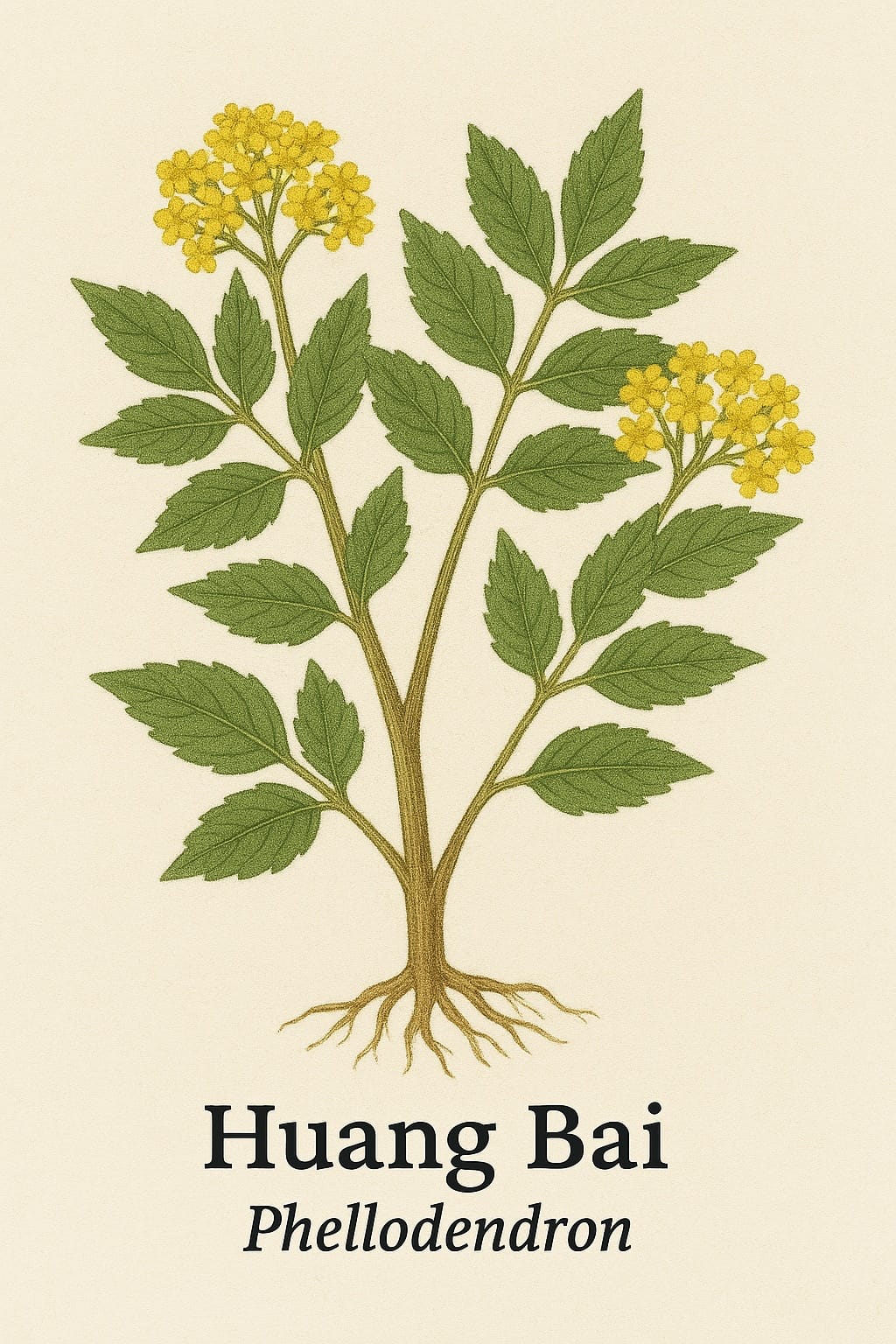
2. Huang Bai (黄柏, Phellodendron Bark / Phellodendri Cortex)
TCM Functions:
- Clears Damp-Heat, particularly in the lower body
- Resolves Fire toxins in skin and joints
- Reduces swelling, pain, and abscesses
Biochemical Profile:
- Contains berberine and phellodendrine, potent antimicrobial alkaloids
- Downregulates TNF-α and IL-6 in inflamed tissues
- Inhibits matrix metalloproteinases (MMPs), helping to prevent cartilage degradation
Topical Use:
- Used for red, hot, swollen injuries and infections
- Especially effective when Heat signs predominate
Pharmacokinetics:
- Minimal systemic absorption when used externally
- May enhance wound healing via localized antimicrobial effects
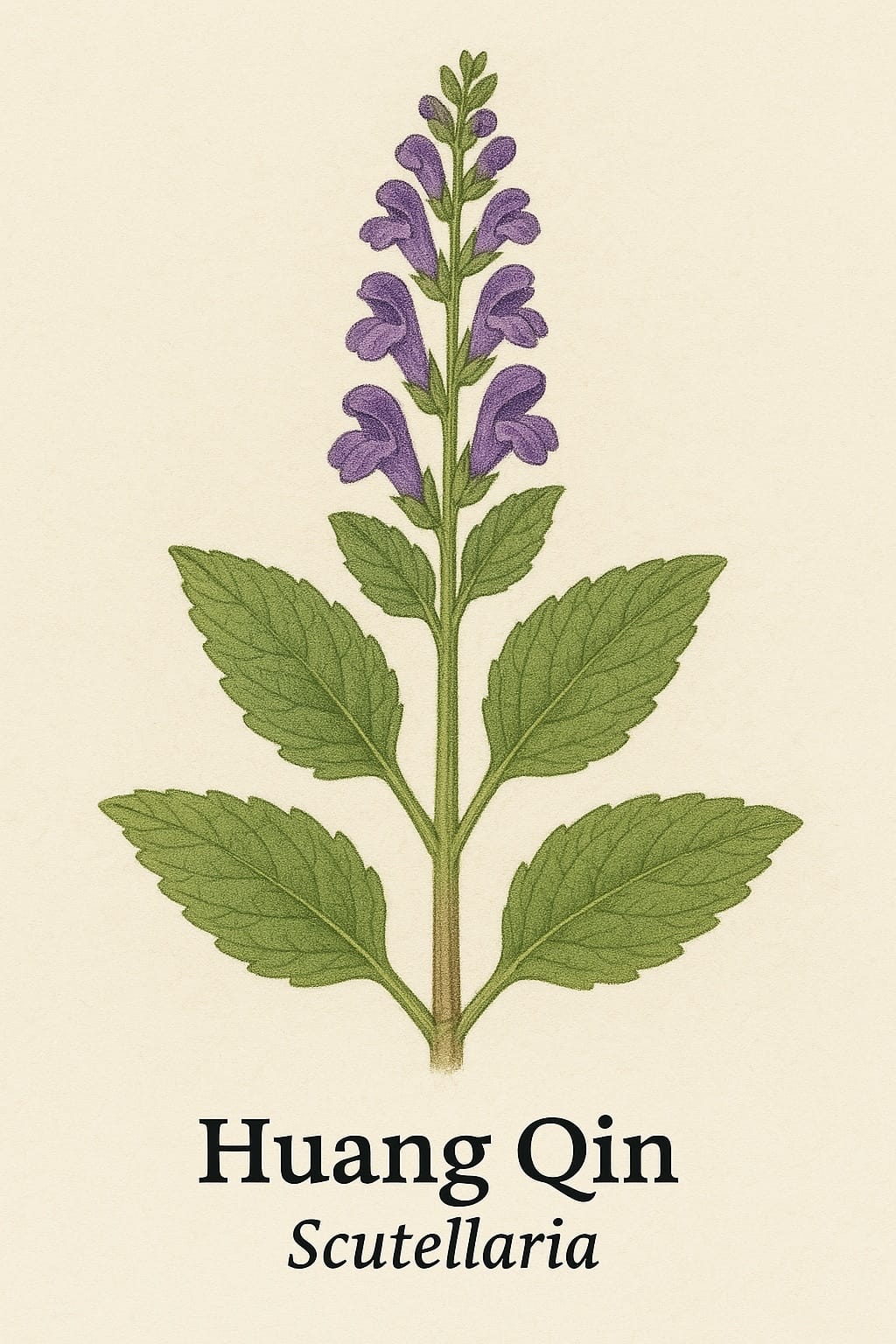
3. Huang Qin (黄芩, Baikal Skullcap Root / Scutellariae Radix)
TCM Functions:
- Clears heat and drains Fire
- Cools the blood
- Detoxifies skin eruptions and abscesses
Modern Research:
- Rich in baicalin, baicalein, and wogonin—flavonoids with:
- Potent anti-inflammatory activity
- Antioxidant effects on injured tissues
- Immune-modulating properties that reduce hypersensitivity and swelling
Topical Use:
- Ideal for superficial injuries, dermatitis, or joint inflammation
- Often used in burns, rashes, and Heat-type pain
Pharmacokinetics:
- Effective through transdermal absorption
- Baicalin’s bioavailability increases with alcohol or vinegar extraction
Optional Herbs in Lineage-Based Variants
While the classical trio—Da Huang, Huang Bai, and Huang Qin—forms the core of San Huang San, many lineage-based formulas add other herbs to customize its effects based on the nature of the injury or the practitioner's clinical philosophy. Common additions include:
Hong Hua (红花, Carthamus / Safflower)
- TCM Function: Invigorates Blood, disperses stasis, alleviates pain, and opens the channels.
- Why it’s used: In acute trauma with swelling, Hong Hua boosts circulation to prevent blood congealing while supporting the formula’s detoxifying action.
- Modern Research: Contains flavonoids (like hydroxysafflor yellow A) that enhance microcirculation, reduce inflammation, and prevent platelet aggregation.
Zhi Zi (栀子, Gardenia Fruit)
- TCM Function: Clears Heat, drains Fire, eliminates irritability, and reduces swelling.
- Why it’s used: Ideal for trauma with signs of intense Heat—especially redness, pressure pain, or irritability from the injury.
- Modern Research: Rich in genipin and geniposide, compounds known for anti-inflammatory, antipyretic, and hepatoprotective properties. Also modulates cytokine responses in inflamed tissue.
Pu Gong Ying (蒲公英, Dandelion / Taraxacum)
- TCM Function: Clears Heat, resolves toxicity, and reduces abscesses and swellings.
- Why it’s used: Especially helpful in cases of soft tissue infection, pus formation, or early abscess development alongside trauma.
- Modern Research: Exhibits antimicrobial, hepatoprotective, and detoxifying effects. Contains taraxasterol and polysaccharides that support immune modulation and inflammation control.
These additions expand the formula’s reach into more complex injury presentations, including Hot-type swellings with early pus formation, irritability or agitation from Fire, and congested Blood stasis in the surface tissues.
Modern Integrative Insights
Whereas Western treatment might suggest ice for inflammation, TCM’s San Huang San "cools without freezing", preserving circulation while draining pathological heat. It reduces the need for NSAIDs and antibiotics in early-stage injuries and infections, offering a gentler but effective alternative.
Shaolin & Martial Lineages: Practical Medicine in Motion
San Huang San was often used alongside warming liniments like Die Da Jiao in martial settings. A typical treatment would involve:
- San Huang San for the first 1–3 days to pull out heat and control swelling.
- Die Da Jiao liniments applied afterward to restore circulation and promote tissue healing.
This two-phase approach mirrors modern sports medicine: reduce inflammation first, then stimulate recovery.
Final Thoughts
San Huang San is a masterclass in herbal thermodynamics—cooling, detoxifying, and regulating tissue response without blocking the flow of healing Qi and Blood. It represents the wisdom of TCM in balancing opposites: dispersing heat without trapping Cold, moving stasis while nourishing the terrain.
Whether you’re treating a sprained ankle, a hot swollen joint, or a red inflamed wound, consider swapping the ice pack for a dose of San Huang San. It’s not just an alternative—it’s a smarter, targeted way to cool the fire without freezing the body’s natural rhythm.
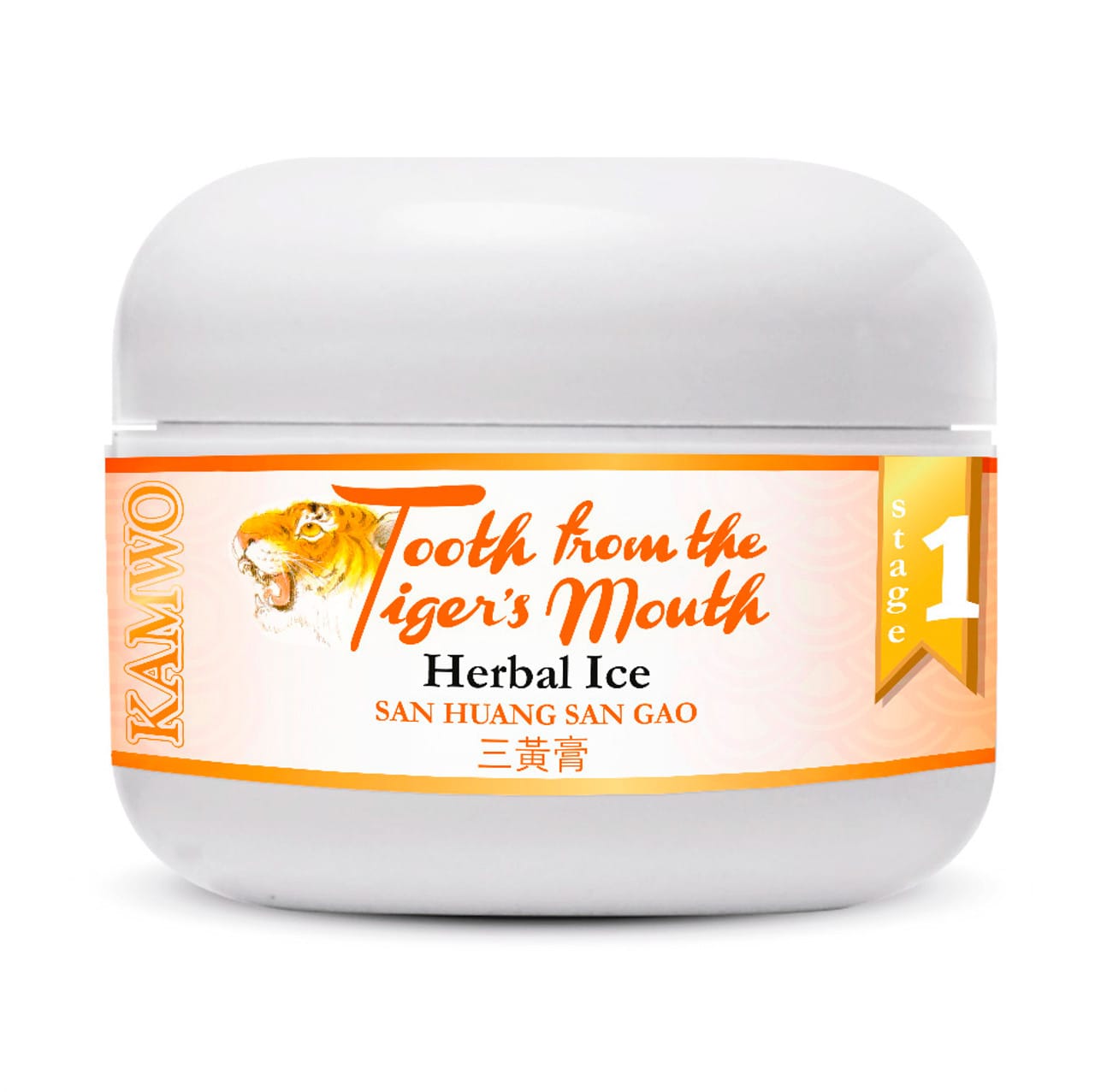
Member discussion